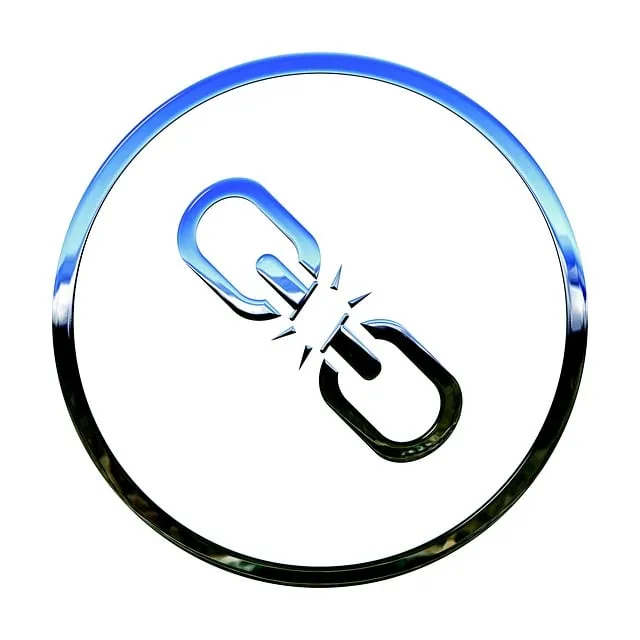Link equity distribution is a powerful tool for optimizing internal links, boosting SEO performance, and enhancing user experience. It involves strategically disseminating 'link juice' throughout a website's structure by choosing relevant anchor text, interlinking related content, and directing high-quality backlinks to authoritative pages. By conducting comprehensive audits, restructuring content hierarchies, and implementing 301 redirects, you can fix broken links and ensure every internal link contributes positively to target page value. Regular updates, strategic redirections, and descriptive anchor text are essential for maintaining an effective distribution balance. Measuring success through tools like Google Search Console allows for data-driven optimizations based on user behavior and search engine guidelines, ultimately driving continuous SEO improvement and increased online visibility.
“Struggling with internal linking issues? This comprehensive guide is your roadmap to fixing broken links and optimizing your site structure. We’ll delve into the core concept of link equity distribution, revealing its crucial role in boosting user experience and search engine rankings. Learn effective strategies for identifying problematic links, enhancing their strength, and utilizing tools to streamline the process. From best practices to measuring success, this article equips you with the knowledge to optimize internal linking like a pro, leveraging the power of link equity distribution.”
- Understanding Link Equity Distribution: The Foundation for Internal Linking
- Identifying Broken Links and Their Impact on Your Site's Performance
- Strategies to Fix Weak Internal Links and Enhance User Experience
- Utilizing Link Equity Distribution Tools for Efficient Problem-Solving
- Best Practices for Optimizing Internal Link Structure Post-Repairs
- Measuring Success: Evaluating the Effectiveness of Your Internal Linking Efforts
Understanding Link Equity Distribution: The Foundation for Internal Linking

Link equity distribution is a fundamental concept that underpins effective internal linking strategies. It refers to the way in which link juice or ‘link equity’ is passed from one page to another within your website’s structure. Understanding this process is crucial for improving your site’s overall SEO performance, especially when addressing broken or weak links. The primary goal is to ensure that valuable link equity is distributed evenly across relevant pages, strengthening their authority and relevance in the eyes of search engines.
By implementing strategic internal linking, you can guide users and search engine crawlers through your website’s labyrinthine structure, showcasing the most important pages and topics. This process involves carefully selecting anchor text and targeting specific pages with relevant backlinks, which directly contributes to a more efficient link equity distribution strategy. Tips for optimizing this include using contextual anchor text, interlinking related content, and prioritizing high-quality, authoritative pages as link destinations. A tutorial on effective internal linking should cover these aspects in detail, providing a step-by-step guide to enhance your site’s architecture and improve its search engine visibility.
Identifying Broken Links and Their Impact on Your Site's Performance

Identifying broken links is a crucial step in optimizing your site’s structure and performance. These links can significantly impact user experience and search engine visibility. When internal links fail to connect pages correctly, it creates holes in your website’s ‘tapestry’, leaving users and search engines unable to navigate seamlessly. Broken links signal to search engines that the content may be obsolete or inaccessible, potentially damaging your site’s authority and ranking.
By understanding how to use link equity distribution tips effectively, you can mitigate these issues. Link equity distribution strategy involves ensuring that every internal link contributes positively to the overall value of a page it points to. This is essential for SEO as search engines scrutinize the strength and relevance of links to determine a page’s importance. Optimizing link equity distribution can enhance your site’s crawlability, reduce bounce rates, and improve user engagement, all of which are vital for long-term success in the digital landscape.
Strategies to Fix Weak Internal Links and Enhance User Experience

To address weak internal links, start by conducting a thorough audit to identify problematic areas. Utilize tools like Google Search Console and SEO audits to analyze link strength and distribution across your site. This will help uncover pages with low-quality or broken links, as well as demonstrate how link equity is currently distributed. Once identified, focus on implementing strategic changes to enhance user experience and improve search engine visibility.
Consider restructuring content hierarchies by creating logical site maps that direct users and search engines efficiently. Update anchor text for internal links, ensuring they are descriptive and relevant to the linked page’s content. Additionally, implement 301 redirects for broken links to prevent users from landing on inaccessible pages. By optimizing link equity distribution through these methods, you can significantly improve your website’s overall performance and deliver a seamless user experience.
Utilizing Link Equity Distribution Tools for Efficient Problem-Solving

Broken internal links can significantly impact a website’s performance and user experience. To efficiently address these issues, utilizing Link Equity Distribution Tools is essential. These tools help in identifying weak links and distributing link equity effectively across your site structure. By understanding how to use link equity distribution, you can ensure that valuable link juice flows to relevant pages, enhancing both crawlability and user navigation.
A link equity distribution tutorial or optimization guide can provide valuable tips for maximizing the benefits. This includes analyzing anchor text usage, assessing link context, and prioritizing pages based on their importance and relevance. By following these links distribution tips, you can create a robust internal linking strategy that not only fixes broken links but also improves overall website performance, making it a game-changer for any digital landscape.
Best Practices for Optimizing Internal Link Structure Post-Repairs

After repairing broken or weak internal links, optimizing your site’s structure becomes crucial for maximizing link equity distribution. A well-planned internal linking strategy ensures that each page contributes to your website’s overall authority and visibility in search engines. Start by conducting a thorough audit to identify pages with low link juice flow; these are areas that require attention. Prioritize redirecting or creating new links from relevant, high-authority pages to boost the signal across your site.
Implement a hierarchical structure where important pages are interconnected, forming a solid foundation. Use anchor text wisely, keeping it descriptive and relevant to the linked page’s content. Avoid over-optimizing with keyword-rich anchors; instead, focus on clear language that naturally incorporates keywords when applicable. Regularly update and reevaluate your internal linking strategy, as new content creation or changes in your website’s architecture may impact link equity distribution. A well-executed link equity distribution tutorial or link equity distribution tips can significantly enhance your site’s performance and user experience.
Measuring Success: Evaluating the Effectiveness of Your Internal Linking Efforts

Measuring success is a vital step in understanding the effectiveness of your internal linking efforts. To assess the impact, pay close attention to link equity distribution within your site structure. Tools like Google Search Console and advanced analytics platforms can provide insights into how search engines crawl and value your pages. By analyzing click-through rates (CTRs) and time spent on pages, you can identify high-performing content that effectively guides users and signals importance to search algorithms.
Optimizing link equity distribution involves strategic placement of internal links to ensure relevant pages gain the necessary boost. Implement these tips: prioritize key pages within your site architecture, use anchor text that is descriptive and contextually relevant, and maintain a balanced distribution across related content clusters. Regularly review and update your internal linking strategy based on user behavior data and search engine guidelines, ensuring continuous SEO optimization for better rankings and improved user experience.
